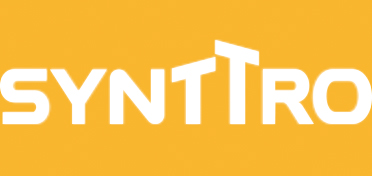From/UC TODAY
By/Rebekah Carter

Collaboration isn’t a new concept. Teamwork is something that we’ve relied on throughout history. However, there’s more to it today than people often realise. Collaboration isn’t just bringing people together in the same room and hoping they get along. Today’s companies need to find new ways of connecting their teams – even when they’re miles apart.
Research shows that collaborative teams are more than 5 times higher-performing compared to their peers. In a world that’s always connected, team collaboration tools are the heart of the collaborative experience.
The right technology unlocks productivity and performance solutions for any kind of team. However, it’s also essential that businesses have the right strategies in place for using those tools. Here are just some of the steps you can take to improve team collaboration.
1. Use the Right Tools for the Job
Around half of global employees believe that they’re more productive when they’re working from home. This indicates that the demand for remote work will continue in the years ahead. Mobile working brings with it the need for new tools, such as instant messaging apps, and video conferencing services.
Aside from simply investing in these solutions, companies also need to ensure their people know which tools to use, and when. Video conferencing is an excellent solution for when complex conversations are necessary. However, it won’t be the right choice for quick catch-ups and confirmation. Make sure your customers know when it’s appropriate to send an email, pick up the phone, or start a video call.
2. Make Video Part of the Culture
Video-first approaches to collaboration are becoming more popular these days. New generations that are already comfortable with video are entering the workforce. What’s more, now that all of the leading team collaboration tools come with easy-to-access video, starting a call is simpler.
However, there will be some people in your team that may resist video. As a business leader, you need to ensure that you highlight the value of video for ongoing connections. Video mimics the face-to-face conversations that remote employees don’t get each day.
Video can be a valuable way to add context to a meeting. Don’t forget to use video for non-work conversations too. This leads to better bonding experiences.
3. Make Expectations Clear
One of the biggest benefits of remote and distance working is that it gives employees more freedom. However, it’s still important to have the right policies in place. Guiding your team members by letting them know when everyone is expected to be online is a good start. Ensure your employees know when meetings and conversations are mandatory.
Additionally, it’s worth ensuring that your employees know what you’re going to be measuring when they’re collaborating from a distance. How are you going to track the engagement of your non-office staff members? Do you expect your employees to check-in regularly and let you know what progress they’ve been making on certain projects?
Explain your expectations from day one, and you’re less likely to have misunderstandings later.
4.Develop Trust and Respect
While it’s helpful to check-in on your remote and distance employees at times, if you want team collaboration to thrive, you need to generate trust. Constantly following up with your staff members can make them feel overwhelmed and unhappy. It’s important to know when to step back and let employees find their own way.
Additionally, encouraging regular discussions about working methods and strategies can help too. Different people will approach projects in their own unique ways. Asking your employees to be respectful of the strategies and backgrounds of other employees will be essential to help everyone work effectively together.
5.Make it Easy to Ask for Help
If your employees are working remotely for the first time, or you’re just new to relying on collaboration tools, there are bound to be some teething pains. Start by making sure that you have plenty of documentation available on how to use certain tools and services. Guides on how to set up successful video conferences could be incredibly helpful.
At the same time, it’s essential to make sure that your people know who to turn to when they need additional support. There are going to be times when your staff have questions. Make sure that you’re ready to answer them.
6.Gather Data for Constant Improvement
Team collaboration apps are often a valuable addition to any environment. However, you’re only going to see exactly how effective your strategies are if you’re willing to measure them. Keep track of your project management tools to see how quickly employees are moving through tasks. Track the adoption rate of new tools and look at how many people are sticking to un-approved options.
As well as collecting data from the collaboration tools your team use, remember to get feedback from the people themselves. Your employees will be able to tell you exactly what they need to be as productive as possible.
7.Set Deadlines
If you’re embracing team collaboration tools because some of your employees are working remotely, then it’s important to ensure that your team knows that they still have to complete tasks by a specific time. Setting deadlines with project management tools will help your employees to see which tasks are most important so that they can arrange their time accordingly.
It may also be valuable to have a system in place that allows your team members to request opportunities to delegate work elsewhere if they need to save some time.
8.Encourage Friendly Competition
Competition can sometimes be a toxic thing in the work environment. However, it also has the power to keep employees motivated and engaged when used correctly. Allowing everyone in your collaborative group to keep track of the progress of the team is often a good idea. If your employees can see how their work measures up to their coworkers, they also know whether they need to try harder.
You could even use tracking tools to give your employees the opportunity to win awards and bonuses. Let your team members know that there’s a reward available for them if they deliver the results that you expect by a certain deadline.
9.Encourage Casual Chat
Collaboration tools are incredibly valuable for ensuring plenty of business-related conversations, and team-work can happen. With the right tool you can share files, screens, and projects with excellent efficiency. However, it’s also important to encourage some casual non-work chat from time to time too. Allowing for catch-up sessions between employees will create friendships.
Your team members need to feel that they’re more than just a worker in your hive. With casual chat and watercooler rooms on your team collaboration tools, you can encourage meaningful bonding.
10.Stay Flexible
Finally, remember that the needs of your team are likely to evolve with time. There may be a point when you need to add new tools and services to your stack. This is one of the reasons why it’s so valuable to choose a team collaboration tool that allows for integrations, plugins, and extensions.
Pay close attention to how your employees work and what helps them to get the most done each day. Over time, your collaborative strategy will evolve to suit the unique needs of your team members. Be ready to pivot, add extra technology, and even offer additional training when this happens.
Team collaboration isn’t going anywhere. As the world of work continues to evolve, collaborative tools will be at the heart of the way that we work together. Make sure you’re ready.
